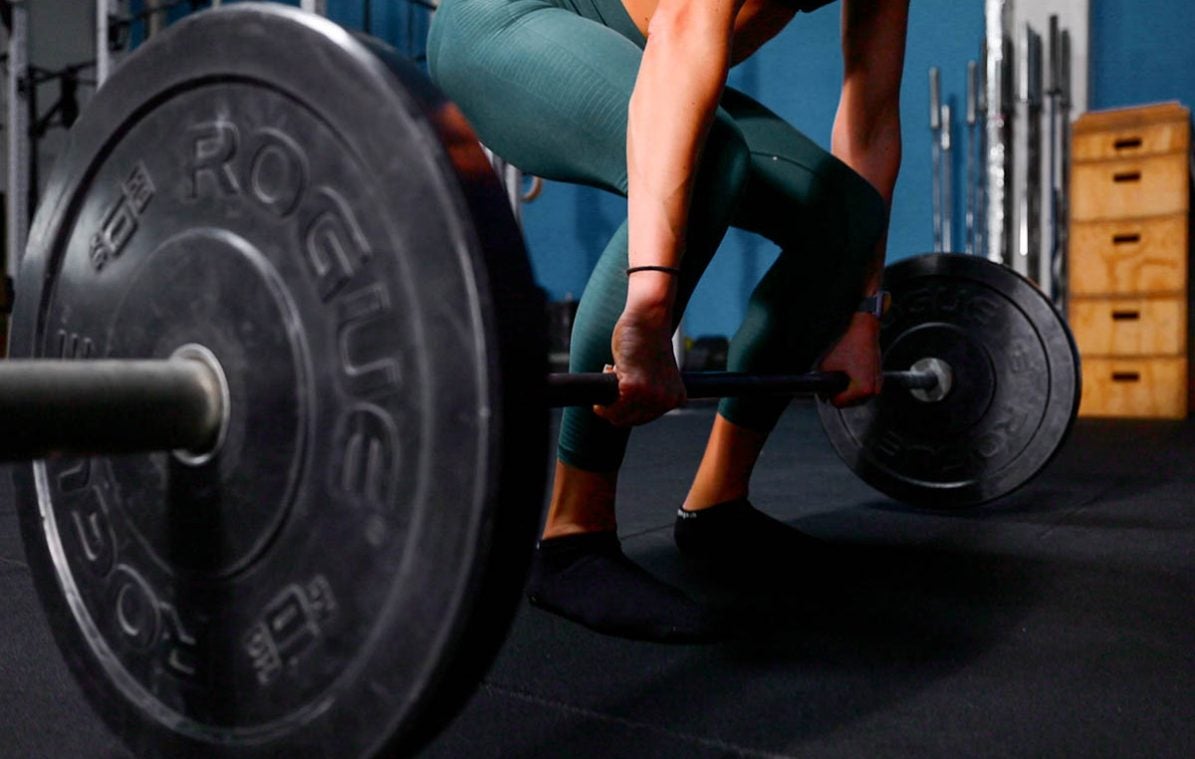Why This HYROX Athlete Doesn’t do Core Training
 foodspring
foodspring
Yes, you read that correctly: HYROX elite athlete and world record holder Linda Meier does not do any core-specific exercises. But that doesn’t mean she doesn’t have a strong core. HYROX races involve functional exercises like sled pulls and farmers carries, which challenge the core muscles in particular. In other words, you’ll be at a distinct disadvantage in a HYROX race without a strong core.
Find out more: Why you should NOT do abdominal exercises.
So how come Linda is one of the best HYROX athletes, even without doing regular core training? “I just do basic exercises like squats, deadlifts, bench presses, and pull-ups. They always use your core muscles,” Linda says. In basic exercises such as deadlifts, your muscles work together rather than separately. The force is transmitted through what are called muscle chains, and your core is the hub that stabilizes you. This means these exercises always train your core as well.
In order to train holistically, basic functional exercises are an essential element of your training plan and should account for the majority of it. If your core is your personal weak point, it can still make sense to supplement your workout with 2 or 3 core exercises a few times a week on top of basic exercises. Current research findings show that targeted core training can also significantly improve athletic performance in sports including soccer, handball, and swimming.
If you want to train like a HYROX athlete, Linda has shared her favorite exercises that challenge the entire body including the core.
#1 Squat
Duck your head under the bar in the power rack and slide your back along it until you find the right position. The bar should rest either on the groove in the bones of your scapula or on your trapezius muscles, with your elbows slightly behind the bar. Take a few steps back, lifting the bar out of the power rack, and stand with your feet in a position that works for you, with your toes pointing slightly outward. Tighten your core muscles, push your hips back, hinge your upper body slightly forward, and bend your knees. Keep your back straight and your head in a neutral position. Depending on how flexible you are, your hips at the bottom of the squat should be below the back of your knees. Reverse the movement by pushing off through your feet as you extend your hips and knees, and straighten your upper body.
Muscles: Hamstrings, quads, glutes, back extensors, core.
Remember: To improve the depth of your squat, you can place small weight plates under your heels and incorporate our mobility exercises into your training program.
#2 Deadlifts
Stand close to the barbell with your feet shoulder-width apart. Hinge forward from your hips and grasp the barbell in an overhand grip with your hands shoulder-width apart. Tense your muscles slightly, retract your shoulder blades, and lift your hips with a straight back. Your shins should be vertical and your knees bent. The upward movement is powered by your legs and lower back muscles. Straighten your knees, drive your hips forward, and straighten your upper body to an upright position, guiding the bar up along your shins. Always keep your back straight and arms extended. When you reach the top of the deadlift, briefly set your shoulder blades and squeeze them together. For the downward movement, lower the bar close to your body by pushing your hips back slightly as you bend your knees and hinge your torso forward. Return the weight to the starting position.
Muscles: Back muscles, hamstrings, quads, glutes, core, forearm muscles.
Remember: When holding the weight at the top of the deadlift, make sure your back is straight without hyperextending.
#3 Pull-Ups
Grasp the bar with your hands slightly wider than shoulder width, palms facing forward. Tense your entire body and lift your feet off the floor, focusing your gaze on the bar. Pull your shoulder blades and arms down at the same time and pull yourself up using the strength of your back muscles. When you reach the top of the pull-up, your shoulder blades will be squeezed together and your chest stretched outward. To reverse the movement, slowly lower yourself down and return to your starting position with your arms extended.
Muscles: Back muscles, biceps, shoulders, core, forearms.
Remember: If the pull-ups are difficult for you, you can use a resistance band to make the exercise easier. Negative pull-ups and rowing can also help you build up the necessary strength in your back.
#3 Bench Presses
Lie on a flat bench and place your feet firmly on the floor. Pull your shoulders back and arch your back slightly. Grasp the bar with your hands slightly wider than shoulder width, keeping your wrists straight. Bend your arms and lower the bar to your chest (below your nipples) in a controlled manner. Your elbows should form an angle of about 45 degrees to your body. To reverse the movement, bring the bar up explosively and extend your arms.
Muscles: Chest, shoulders, triceps.
Remember: Get yourself a workout buddy who can stand at the head of the bench and help you rack the barbell again, especially when you’re working with heavy weights.
More interesting articles from foodspring:
- An Athlete Reveals why HYROX Should be Your Next Challenge
- The ultimate kettlebell workout for a stable core
Sources for this article
We at foodspring use only high-quality sources, including peer-reviewed studies, to support the facts within our articles. Read our editorial policy to learn more about how we fact-check and keep our content accurate, reliable, and trustworthy.





























